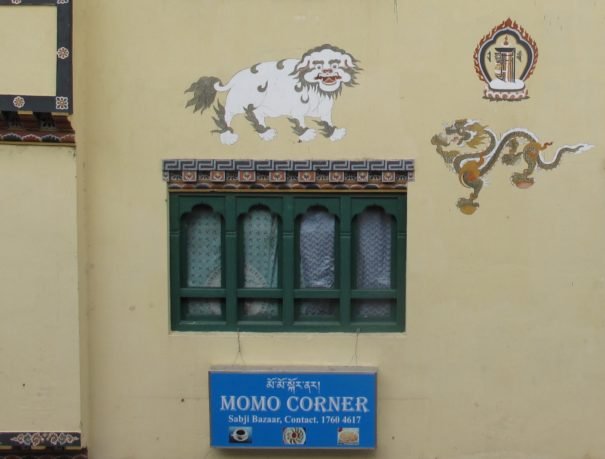
Dumplings for Breakfast Are Totally Worth the Food Coma

Dumplings for Breakfast Are Totally Worth the Food Coma
Momos in Bhutan
My favorite place for weekend brunch in Thimphu, Bhutan’s sleepy capital, is Wangchen Momo Corner.
Momos are dumplings of Central Asian origin. The world’s (probably) oldest momo was found, uneaten, in a seventh-century tomb near Turfan, China. They spread along the Silk Road and became popular in the steppe highland communities of Tibet, Nepal, and Bhutan.
I find that the best way to get to Wangchen Momo Corner is to walk through the morning market. It puts the California farmer’s market of my youth to shame. Husky purple banana flowers straddle the top of the concrete vendors stalls. Dark, amber bottles of medicinal honey line tables. Chunks of dried pork belly threaded with strong smelling cheese hang on coarse twine from the ceiling. And finally, at its end, as I amble past overflowing bags of puffed rice and step over the cracked pavement, the nondescript shop appears.
Most weekends, I have to jostle for a seat. Everyone is perched precariously on tiny stools, trying to flag down the one waitress. There isn’t much to order; most tables are filled with plates of momos. But when the air is chilly enough to puff out clouds of breath, I also order thukpa—a spicy broth filled with thick, slippery wheat noodles and a few stalks of broad-leafed greens.
Here, the cheese momos are actually filled mostly with sweet cabbage and just a pinch of slightly salty white curd. The minced beef ones taste faintly of chives and squirt oil from their sides when you bite into them. They both arrive on tiny, tin-lined plates.
I spoon small drops of a bright red chili sauce and a sprinkle of thingye—numbing ground Sichuan peppers—onto the momos. Once, I overdid it with the thingye and set my tongue abuzz.
I used to order suja—buttered tea—to drink. At the time, it sounded like Harry Potter-esque delight. But it didn’t taste as good as it sounds. It’s black tea, foamed with a chunk of butter and a lot of salt. These days, I stick with plain tea, which here in Bhutan is generally a sweet, milky chai that smells of cardamom.
Usually, this meal of dense dumplings ruins my plans for anything else. I always mean to go on a hike afterwards. Instead, I sit at my table or loll around, watching people in the market carrying colorful produce in heavy bags. It’s worth it.